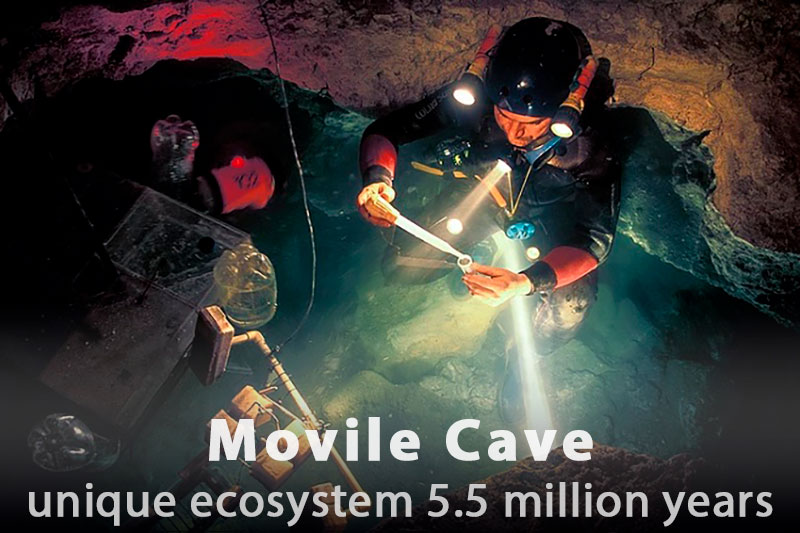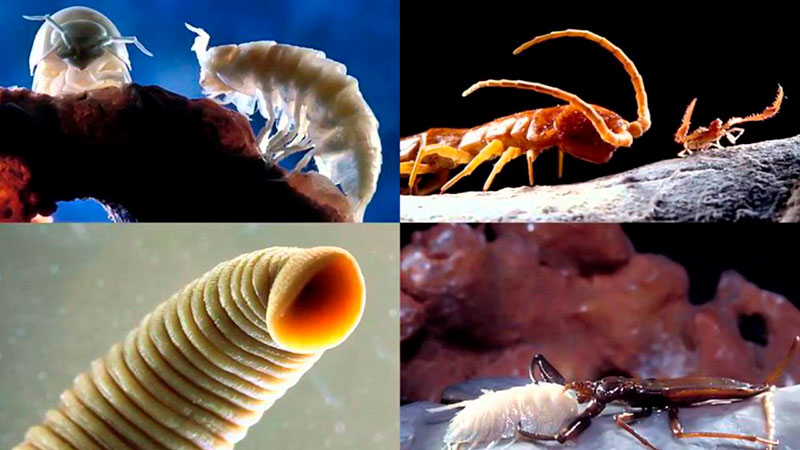Movile Cave is one of the most amazing natural phenomena we know. Separated from the rest of the world, this cave is basically a miniature ecosystem that has existed for millions of years now. Scientists have been poring over it for decades, discovering more and more new mysteries. Why is it so special? Let's figure it out!

Isolated from the outside world for 5.5 million years, the small cave gave birth to a one-of-its-kind fauna and created a complex closed ecosystem.
Unique fauna is a result of environmental evolution, and changes in the atmosphere are well part of it. The oxygen level in the cave is only 7–10% versus 21% in our usual air. In the meantime, there is about 100 times more carbon dioxide than on the outside. Also, the local atmosphere contains ammonia, is high enough in hydrogen sulfide, and even has methane—a genuine another-planet chemical environment.
Until now, we know 57 species inhabiting the cave, with 37 endemics or species found exclusively here. They managed to adapt to an unusual environment, creating absolutely new, never-before-seen connections.
The cave was first discovered by Cristian Lascu in 1986. It is located in Romania, just a few kilometers from the Black Sea coast. Well, it is not particularly beautiful or able to impress others with its beauty. It's a typical limestone cave about 300 meters long. The cave also has a lake that divides the surface into three unconnected air bells.
It has become famous for its striking atmosphere, more like a distant planet than a plain cave in Romania. That's why many insects and primitive animals that once happened to get there had to evolve to survive.
 The cave is crawling with diverse species. There are leeches, snails, water scorpions, spiders, let alone various bacteria. The first inhabitants arrived about 5.5 million years ago! And the cave was cut off from the outside world for at least two million years. It became possible to determine, thanks to the unique species of the snail — One of the most recent animals in the cave. Others just failed to survive in the changing environment, giving way to more adaptable neighbors and competitors.
The cave is crawling with diverse species. There are leeches, snails, water scorpions, spiders, let alone various bacteria. The first inhabitants arrived about 5.5 million years ago! And the cave was cut off from the outside world for at least two million years. It became possible to determine, thanks to the unique species of the snail — One of the most recent animals in the cave. Others just failed to survive in the changing environment, giving way to more adaptable neighbors and competitors.
The extraordinary atmosphere, in addition to the lack of sunlight, forced all cave inhabitants to adapt, change, and find their ways to get life essentials.
Photosynthesis is the basis of life on Earth. It really is. Plants and algae convert carbon dioxide into oxygen using sunlight and get valuable carbon to grow leaves, fruits, and stems. Herbivores eat plants, while predators eat herbivores. But what if to take the sunlight out of this seemingly stable ecosystem? Thus, we get the Movile cave.
In the cave, bacteria serve as plants, which are unable to live without sunlight. But here, it's not about photosynthesis, but chemosynthesis: carbon dioxide splitting (its level is 100 times higher in the cave than in the air) is driven by chemical reactions, not by the sunlight. Bacteria oxidize hydrogen sulfide, releasing nutrients eatable not only for bacteria but also for primitive fungi the cave also teams with. They cover the cave walls and ceilings, especially in the third air bell, where the atmosphere is most different from that of the earth.
Fungi are a food base for woodlice, isopods, pseudoscorpions, collembola, and other "herbivorous" inhabitants of the cave, who, in their turn, are hunted by real predators—water scorpions and leeches. Strikingly, the ecosystem has become perfectly balanced over millions of years and can now exist without energy or other outside resources. The circulation of useful elements is especially notable here.
Besides, the cave is really well populated. Experts counted as many as 15 hundred arthropod collembolas per the cave’s square meter. Blind spiders like eating those. The closest relatives of the latter (the sighted ones, though) nowadays live in the Canary Islands. This gives us the ground to reckon on what the climate was on the territory of modern Romania millions of years ago.
Balanced closed ecosystems like this are most likely to get easily destroyed. One minor intervention is enough to make things go south. Therefore, researchers are extremely cautious given that everything can lead to a disaster—starting with mud on boots to breathing!
Ordinary tourists and exotic lovers are not allowed to get in the cave—only researchers are. Inspectors in charge of recording each entrance to the cave ensure close monitoring. It is usually protected by two hatches and an airtight cover.
Researchers can visit Movile Cave twice a month, and one visit lasts no more than a couple of hours. The group may include no more than three researchers equipped in clean overalls and thoroughly cleaned shoes, or even barefoot in some cases to ensure that bacteria harmful to the ecosystem do not get inside with mud or sand.
References: Links and sources